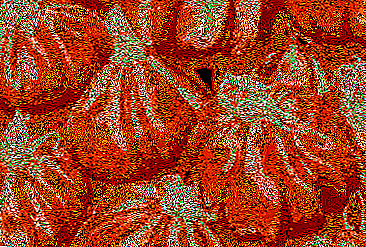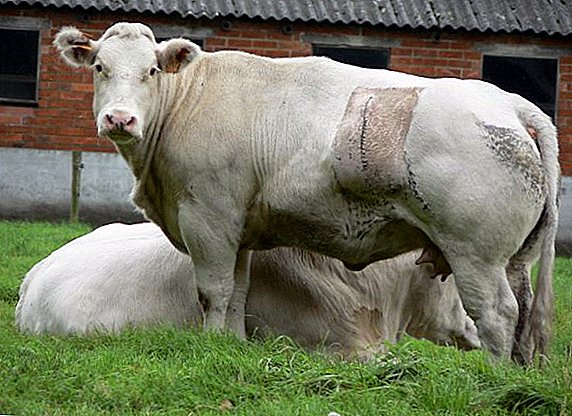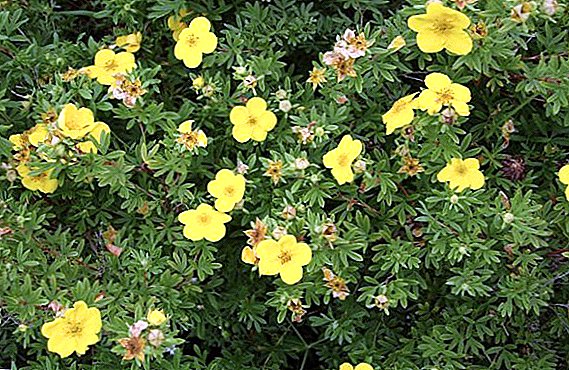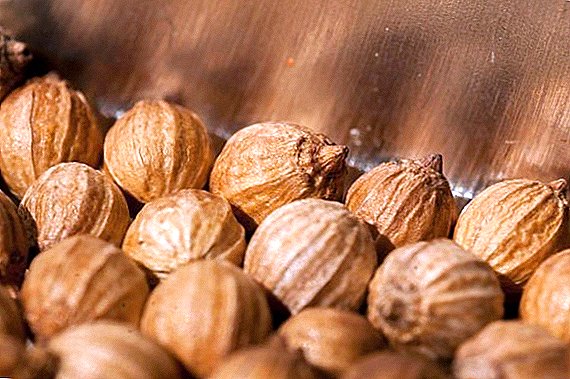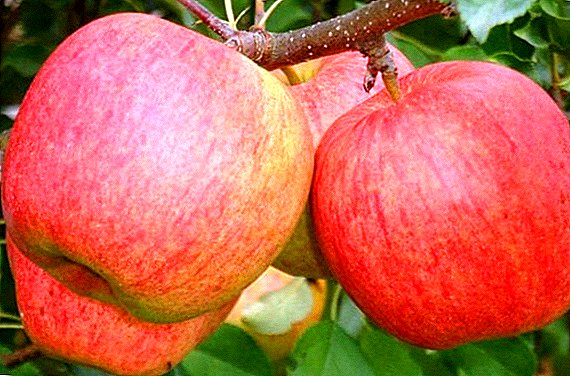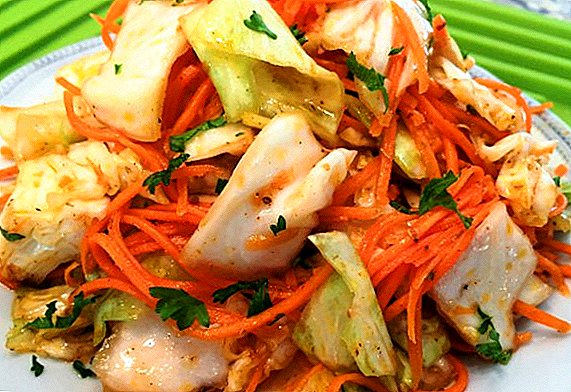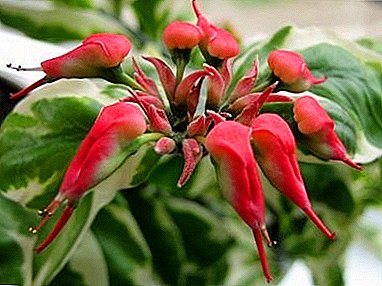
Recently, it has become popular to decorate rooms with unusual exotic flowers. Plants create a special comfort in the house, complement the interior, and purify the air.
At offices they dilute the usual everyday atmosphere with particles of nature, aesthetics. Among the various plants, special attention enjoys Perennial Pedilanthus.
The article below describes the indoor plant. flower pedilanthus, its popular species are titimoid, large-fruited and others, as well as home care for succulent and photo.
Pedilanthus - interesting, unusual, an exotic plant that is popular with many gardeners.
It possesses high decorative qualities, therefore it will be an addition to any modern interior or office space. A perennial flower, so with proper care for a long time it will grow and delight you with its beauty.
Motherland
Homeland pedilanthus are subtropicaltropical US territories, as well as some Mexican areas.
In a natural environment, it looks like tall, overgrown shrub up to 2 meters. In home culture has a more compact size of the trunk and leaves.
Description
 Pedilanthus represents ornamental flowering shrubbelonging to the euphorbia family (Euphorbiaceae).
Pedilanthus represents ornamental flowering shrubbelonging to the euphorbia family (Euphorbiaceae).
Its name comes from Greece from the words shoe ("pedilon") and the flower "anthos".
Leaves are light green (dark or light), wavy. May be sedentary or short, alternate, up to 8-10 cm long, smooth or slightly pubescent.
The stem is cylindrical, grayish or green in color.
The flowers are formed in dense apical inflorescences with two red, small, pointed bracts., about 2 cm in diameter. Inflorescences are pink or red. They resemble the heads of little birds or shoes.
Kinds
In nature, there are 15 different species. The most common in room culture are:
Large fruit
Pedilanthus large-fruited (macrocarpus benth.).
Perennial leafless bush bush succulent. The leaves are reduced in the form of flakes. Motherland - Sonora. It has rounded, gray-green stalks that store water in dry times.
Part of the stems can change to a flattened view. Umbellate flowers, red or orange tinged.
Titloidal
Pedylanthus titimaloid (tithymaloides (L.) Poit.).
In the people it is often called the "devil's ridge" for an unusual feature of the stem, which changes its direction when new leaves appear. It grows to 60-80 cm.
It is a branched, thickened shrub. with a smooth erect, fleshy, curved stem and lacent leaves that differ in color: green with white, with creamy edges, pink hue.
Color depends on the conditions of possession. Red inflorescences. Subspecies ssp. smalii. Differs more curved, zigzag stalk.
Finca
Pedilanthus Fink (finkii Boiss.).

Endowed bright, green, large leaves. Stems zigzag, glossy erect. In habitat, common in tropical rain forests in the United States. Prefers a light, breathable soil.
Shportsevy
Pedicanthus spratzovy (calcaratus Schltdl.).

Common tree view. Very high evergreen shrub up to three meters in height. Stems are green, dark, branching. The leaves are ovate-rounded, pointed, with wavy edges, up to 5-6 cm long.
In cool weather conditions, can discard some leaves. The same happens with unfavorable home maintenance.
Home care
Pedilanthus demanding care, attention and care.
 At the same time, taking care of him at home is not at all difficult and even a beginner will be able to cope with this task.
At the same time, taking care of him at home is not at all difficult and even a beginner will be able to cope with this task.
Many flower growers don't pay enough attention care after purchase, after which face different problems.
At the beginning, the pedilanthus must be transplanted into another container.
The pedilanthus flower shop is kept in temporary pots, which are used for overexposure.
They are not suitable for permanent maintenance.
The soil
The earth must be loose, nutritious, to ensure adequate air flow and moisture to the root system. Water should not stagnate so as not to provoke the development of root rot.
The best option is to buy ready-made mixture for succulents and cacti.
It is possible to prepare a soil mixture independently from grain and leafy earth in equal proportions, brick chips, sand.
Pot
Capacity is adjusted to the size of the root system. or a little more than her. The flower has small roots. It is better to choose clay pots. This material is more environmentally friendly.
The container must be with a hole in the bottom. At the bottom of the necessarily fill drainage.
Transfer
Transplanting should be done in a warm spring. after the appearance of young leaves. Exception - transplant immediately after purchase. Does not need frequent transplantation. It is carried out when the roots begin to fill the full volume of the pot.
Fertilizers
In summer and spring, the flower is fertilized 1 time in 30 days. It is better to use a special dressing for succulents and cacti. During the rest can not be fed.
Lighting
 Preferably grown in well-lit rooms with open, bright windows.
Preferably grown in well-lit rooms with open, bright windows.
The plant will be most comfortable on the window sills of windows facing the south-east, south-west, and east sides.
If the pot is on the south side, take care of creating ambient lighting. Direct sunlight is dangerous for the flower and can cause burns.
Late autumn and winter due to lack of sunlight additional artificial lighting recommended.
Thermal mode
The room should be moderate temperature: in the summer of about 20-24 degrees, and in the winter no higher than 14-16.
Air more often in the summer, take the pot to the open air, so that it breathes and warms up in the sun.
Protect from drafts in winter and rare temperatures.
Pedilanthus does not like high room temperature and too dry air.. It can get sick, the foliage begins to fall off, and the stem to stretch forward.
Watering
In the spring and summer pedilanthus need abundantbut not frequent watering.
The soil should be completely dry before the next moisture. In winter, the plant is watered rarely (about once every 1-1.5 weeks).
The lack of moisture may indicate dropping leaves or their shedding.
For irrigation, only distilled raw water at room temperature is suitable.
In hot weather, watering should be increased.
Air humidity
The plant is well adapted for keeping in apartments. The air must be dry in moderation..
In the summer, it is recommended that water be sprayed be used as a prophylaxis for dropping and yellowing of leaves.
In winter, do not put the pot near the heating devices..
Some growers place the pot in a pallet with damp pebbles or place a container with water next to it for additional moistening (if required).
Breeding
How to reproduce at home? Pedilanthus easily propagated by cuttings.
 Seeds less often, because this work is troublesome, requires a lot of time and effort.
Seeds less often, because this work is troublesome, requires a lot of time and effort.
Reproduction by cuttings is recommended to be carried out as follows: the tops of the shoots (8 cm in length) are cut off the pedilantus and dried at room temperature for 1-2 days.
Root in dry sand at a temperature of 22-24 degrees. Before planting, the cuttings are heated by sand. Cover the pot with glass is not necessary, so as not to provoke the appearance of rot.
Can be rooted in boiled warm waterby regularly replacing the fresh one.
After rooting cuttings they are planted in a new place.
Bloom
Pedilanthus bloom occurs at the end of autumn and the beginning of winter.
During this period, it is recommended to increase the frequency of irrigation and not to change the location of the pot.
Pruning
Pedilanthus does not require regular pruning with good growth and development.
Some growers prune the plant after transplanting to increase branching.
A third of the branch is cut, and then treated with sulfur or coal for quick healing.
Smell
The houseplant has no pronounced smell.
Lifespan
Pedilanthus is a perennial indoor plant.
With proper care, it will grow and develop every year.. In an adult plant, over the years, the lower part of the shoots may lose their decorative effect due to exposure.
A photo
Pedilanthus care at home:
Pedilanthus flower:


Pedilanthus houseplant:



Diseases and pests
Pedilanthus has a persistent, good immunity.to protect against pests and diseases. Problems can be provoked by improper care.
A common problem is root rot (fungal disease). Associated with improper, excessive watering. Disease insidious.
If not detected in time, it can lead to death. The flower needs to be transplanted, pre-washing the roots from rot, remove the damaged parts and process in a weak solution of potassium permanganate.
New soil and capacity before planting is recommended to be disinfected.
 If the plant is in a hot room with very dry air, it can be attacked by a spider mite, aphid. To get rid of pests will help treatment with soapy water or a solution of actellic.
If the plant is in a hot room with very dry air, it can be attacked by a spider mite, aphid. To get rid of pests will help treatment with soapy water or a solution of actellic.
At defeat whitefly leaves begin to turn yellow and stick to the skin of the hands when touched. Treatment with insecticides is very effective against the pest.
At defeat mealyworm in the leaf axils and on the stems, a cotton-like fluff appears, the plant stops growing. It is required to remove the pest with a cotton swab.
Florist note:
- If a pedilanthus sheds leaves perhaps you keep it in cold, draughty conditions. Pay attention to the state of the stems.
Frozen, dead parts need to be cut. In their place there will be new shoots.
- If late fall or winter began pull the stemYou need to reduce the temperature of the air in the room, just pay attention to the lighting.
It is possible that the flower needs more light.
- If a the flower did not bloom, pay attention to the care in the dormant period.
- Yellowing and drying of the leaves summer indicate a lack of watering.
Do not leave the pot on the windowsill without darkening in hot weather, to prevent overheating, burns.
Beneficial features
The benefits and harm of pedilanthus:
- Pedylanthus titimatidny often used in medicine for the manufacture of antimicrobial agents. Residents of South America use it as a psychotropic drug.
- All parts of the plant are poisonous.. When handling it you need to be careful, use gloves.
Juice is toxic and causes inflammation when it comes into contact with the skin of the hands or eyes.. Keep the flower away from children and pets.


